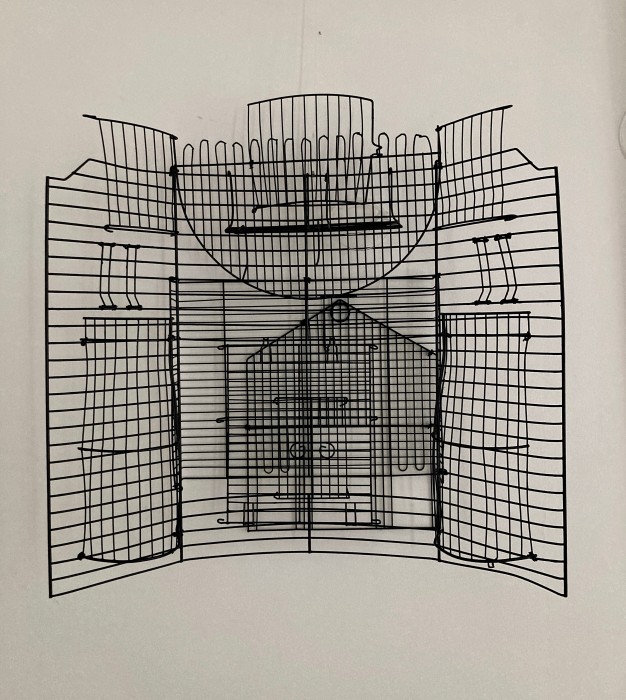Alexandra Mills - In Darlinghurst
“In Darlinghurst”
This exhibition is being shown in buildings that were built in the 1840s to house stonemasons working on the new military barracks on Oxford Street. At the same time, just up the road in Forbes Street, the new Darlinghurst Gaol was being occupied by prisoners on a site that is now the National Art School.
The new gaol was an innovation in prison policy. The buildings were designed in a radial plan to allow constant surveillance of prisoners who were expected to work and learn while incarcerated. The hope was that by learning skills, prisoners would be equipped to stay away from crime on their return to the community.
By the 1870s the Gaol was referred to as an ’industrious hive of labour’. The prisoners worked with timber, stone, metals, leather, paper, textiles and fibres to bind books, shoe horses, make brooms, building materials, boots, mats, hats and clothing for themselves and other colonial institutions. Prisoners worked in harsh and, often, unhealthy conditions. Food and clothing was often inadequate and conditions were generally harsh. Executions were held on site and many prisoners experienced brutality. The original vision for reform of their lives was consistently threatened by overcrowding and cost cutting.
Henry Lawson wrote about his experience at Darlinghurst Gaol in his poems The Song of a Prison and One Hundred and Three. He describes the buildings and the prisoners’ work which, by the time he was there, was often monotonous and meaningless.
The work in this exhibition is made with materials and methods that would have been available for the work of those first prisoners and have been used by students on the same site since its conversion, in 1922, to a trades school and an art school. The colour blue used in several works refers to the way Reckitts blue whitening powder was put into the whitewash painted on cell walls. (Fragments of the blue whitewash can still be seen on the walls of the Cellblock Theatre on the National Art School campus.) This work also makes reference to Lawson’s words, to the gaol buildings and to the prisoners themselves.
References:
Poetical Works of Henry Lawson Angus & Robertson 1970 Sydney. Deborah Beck Hope in Hell National Art School 2020. John Ramsland With Just but Relentless Discipline Kangaroo Press 1996
The artist: Alexandra Mills graduated last year from the National Art School’s Master of Fine Art program where she investigated the labour of prisoners who lived and worked in Darlinghurst Gaol.
